Welcome to our blog post full of fascinating ***Fox Facts For Kids***! From their excellent night vision to their ability to change fur color, foxes are truly remarkable animals. Whether you’re a younger kid intrigued by their playful habits or an older kid amazed by their impressive hunting skills, there’s something for everyone to learn about these cunning creatures. Discover how a group of foxes is called a “skulk,” marvel at their agility as they jump up to 6 feet high, and explore the important role they play in the ecosystem. Join us on this exciting adventure into the world of fox facts, where each tidbit will leave you more intrigued than the last. Let’s dive in and uncover the wonders of these clever and adaptable animals together!
Fox Facts For Kids
1. Foxes Have Excellent Night Vision

For younger kids: Foxes can see really well in the dark to find their way around.
For older kids: Foxes have sensitive eyes that help them see clearly in low light conditions, making them excellent nocturnal hunters.
Detailed explanation:Foxes have long been known for their incredible adaptability and intelligence, making them one of the most fascinating creatures in the animal kingdom. One of the most impressive facts about foxes, especially for kids, is their excellent night vision. This ability is a key adaptation that has helped foxes thrive in a variety of environments.
Foxes are crepuscular animals, meaning they are most active during the dawn and dusk hours when visibility is low. To navigate and hunt effectively during these times, foxes have evolved with specialized eyes that are highly adept at low-light conditions. Their eyes contain a high concentration of rod cells, which are responsible for detecting light and movement. This allows foxes to see clearly in the dark and spot their prey from a distance.
In addition to their exceptional night vision, foxes also have a reflective layer behind their retinas called the tapetum lucidum. This layer enhances their eyes’ ability to capture and reflect even the smallest amount of light, further improving their vision in low-light situations. This adaptation is what gives foxes their unmistakable greenish eyeshine when seen at night.
Overall, foxes’ excellent night vision is a key factor in their hunting success and survival in the wild. Their ability to see clearly in the dark allows them to avoid predators, locate food sources, and navigate their surroundings with ease. For kids interested in learning more about these fascinating creatures, exploring fox facts like their night vision can be a great way to appreciate the wonder of the natural world.
Fox Facts For Kids
2. Foxes Have 40 Different Sounds
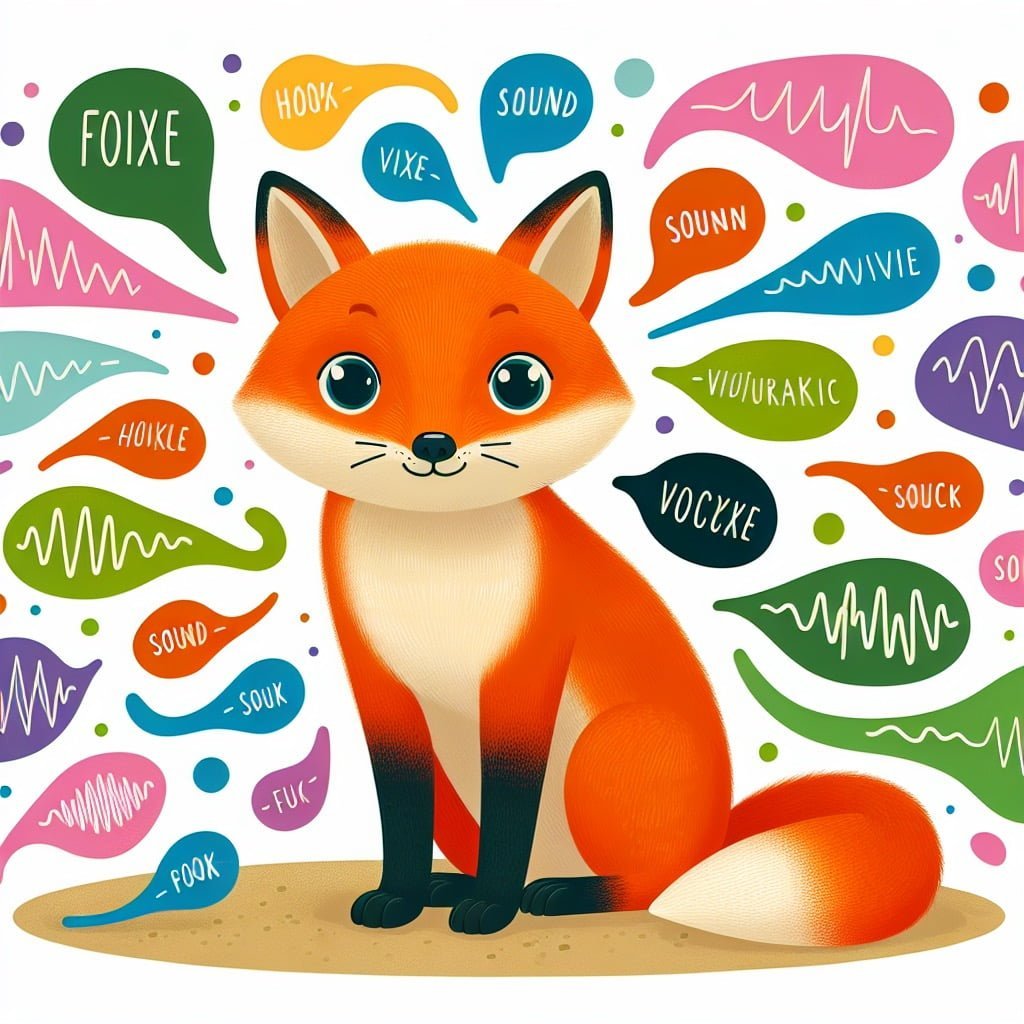
For younger kids: Foxes make many different noises to talk and communicate.
For older kids: Foxes are vocal animals with the ability to produce around 40 distinct sounds, from barks and screams to whines and howls, for various purposes.
Detailed explanation:Foxes are incredibly vocal animals, communicating with each other using a wide range of sounds. In fact, these clever creatures are known to have an impressive repertoire of 40 different sounds. This may come as a surprise to many, as foxes are typically perceived as silent stealthy hunters. However, they are anything but quiet when it comes to communicating with each other.
One of the most common sounds made by foxes is a high-pitched, piercing scream, often described as eerie or blood-curdling. This scream is used primarily during the mating season to attract potential mates and establish territory boundaries. In addition to screams, foxes also use a variety of other vocalizations such as barks, howls, whimpers, and growls to communicate with each other.
Each sound made by a fox serves a specific purpose in their social interactions. For example, a quick, sharp bark may signal danger or alert other members of the pack to the presence of a threat. A low, guttural growl, on the other hand, may be a sign of aggression or dominance in a confrontation.
Foxes are highly social animals, living in small family groups known as packs. Within these packs, communication is key to maintaining social bonds, coordinating hunting strategies, and establishing hierarchy. By having such a diverse range of sounds at their disposal, foxes are able to effectively convey a wide range of messages to their pack members.
In conclusion, the fact that foxes have 40 different sounds is a testament to their complex social structure and communication abilities. These vocalizations play a crucial role in the daily lives of foxes, helping them navigate the challenges of survival and thrive in their natural habitats.
Fox Facts For Kids
3. A Group of Foxes is Called a Skulk
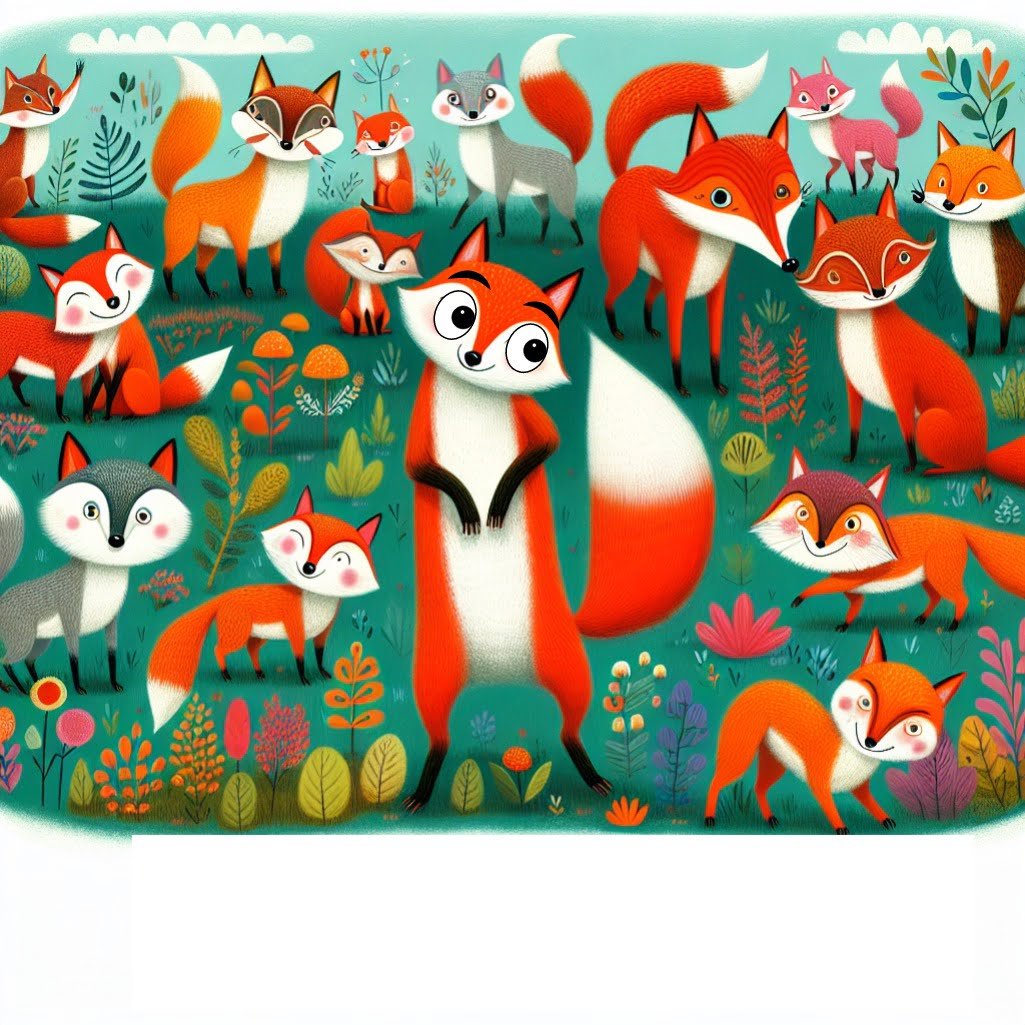
For younger kids: When foxes gather together, they form a special group called a skulk!
For older kids: A bunch of foxes hanging out is known as a ‘skulk’, a unique term used to describe their group behavior and social interactions in the wild.
Detailed explanation:Foxes are fascinating creatures that belong to the Canidae family, which also includes wolves, coyotes, and domestic dogs. One interesting fact about foxes that many people may not be aware of is that a group of foxes is called a skulk. This term is used to describe a group of foxes when they are together in the wild.
Foxes are known for their intelligence and agility, which helps them survive in a variety of environments around the world. They are skilled hunters and are able to adapt to different prey depending on their habitat. Foxes are also known for their distinctive red fur, pointed ears, and bushy tails, which help them blend into their surroundings and evade predators.
In addition to their physical characteristics, foxes also have unique behaviors that make them intriguing animals to study. For example, foxes are known for their playful nature and can often be seen engaging in games with each other, such as chasing and wrestling. Foxes are also territorial animals and will mark their territory with urine to communicate with other foxes in the area.
Overall, the fact that a group of foxes is called a skulk is just one of many interesting aspects of these amazing animals. By learning more about foxes and their behaviors, we can gain a greater appreciation for the natural world and the diverse species that inhabit it.
Fox Facts For Kids
4. Foxes Can Jump Up to 6 Feet High

For younger kids: Foxes are great at jumping really high to catch their prey!
For older kids: Foxes have powerful hind legs that enable them to leap up to 6 feet high in pursuit of prey or to escape from predators when needed.
Detailed explanation:Fox Facts For Kids: Foxes are incredibly agile animals known for their ability to jump up to 6 feet high. This impressive feat is essential for their survival in the wild, as it allows them to escape predators and overcome obstacles in their environment.
The jumping ability of foxes is due to their powerful hind legs, which are designed for quick bursts of speed and agility. These hind legs act like springs, propelling the fox upwards with great force. Foxes also have keen eyesight and a strong sense of coordination, allowing them to accurately judge distances and heights when making a jump.
In the wild, foxes may need to jump over fences, fallen trees, or other barriers while hunting for food or fleeing from danger. Their ability to leap up to 6 feet high gives them a significant advantage in navigating their surroundings and avoiding potential threats.
Foxes are also known for their playful nature, and their jumping ability is often on display during hunting and mating rituals. By leaping and pouncing on prey or potential mates, foxes are able to demonstrate their strength and agility in the animal kingdom.
In conclusion, the fact that foxes can jump up to 6 feet high is a fascinating aspect of their behavior and biology. This skill is not only essential for their survival in the wild but also adds to the charm and mystique of these captivating animals.
Fox Facts For Kids
5. Foxes Are Highly Adaptable Animals

For younger kids: Foxes are smart and can live in many different places.
For older kids: Foxes are known for their adaptability, able to thrive in various environments like forests, mountains, deserts, and urban areas, showcasing their resourcefulness and intelligence.
Detailed explanation:Foxes are highly adaptable animals, which means they have the ability to thrive in a wide range of environments and conditions. This adaptability is a key factor in the success of foxes as a species. Foxes can be found in various habitats including forests, grasslands, mountains, deserts, and even urban areas.
One of the reasons for the adaptability of foxes is their diverse diet. Foxes are omnivores, meaning they eat both plant and animal matter. They have a varied diet that includes small mammals, birds, insects, fruits, and berries. This flexibility in their diet allows them to find food in different environments, making it easier for them to survive and thrive.
Another factor that contributes to the adaptability of foxes is their ability to quickly adjust their behaviors to new situations. Foxes are intelligent animals with keen problem-solving skills. They are able to learn and adapt to changing circumstances, whether it be avoiding predators, finding food sources, or sheltering in new environments.
Furthermore, foxes have a high level of agility and speed, which helps them to navigate different terrains and environments. Their sharp senses, including excellent hearing and vision, also play a crucial role in their adaptability as they are able to detect danger and locate prey efficiently.
In conclusion, the adaptability of foxes is a remarkable trait that has enabled them to successfully inhabit diverse environments around the world. Their diverse diet, intelligence, agility, and sharp senses all contribute to their ability to thrive in various habitats, making them truly fascinating animals to study and observe.
Fox Facts For Kids
6. Arctic Foxes Change their Fur Color
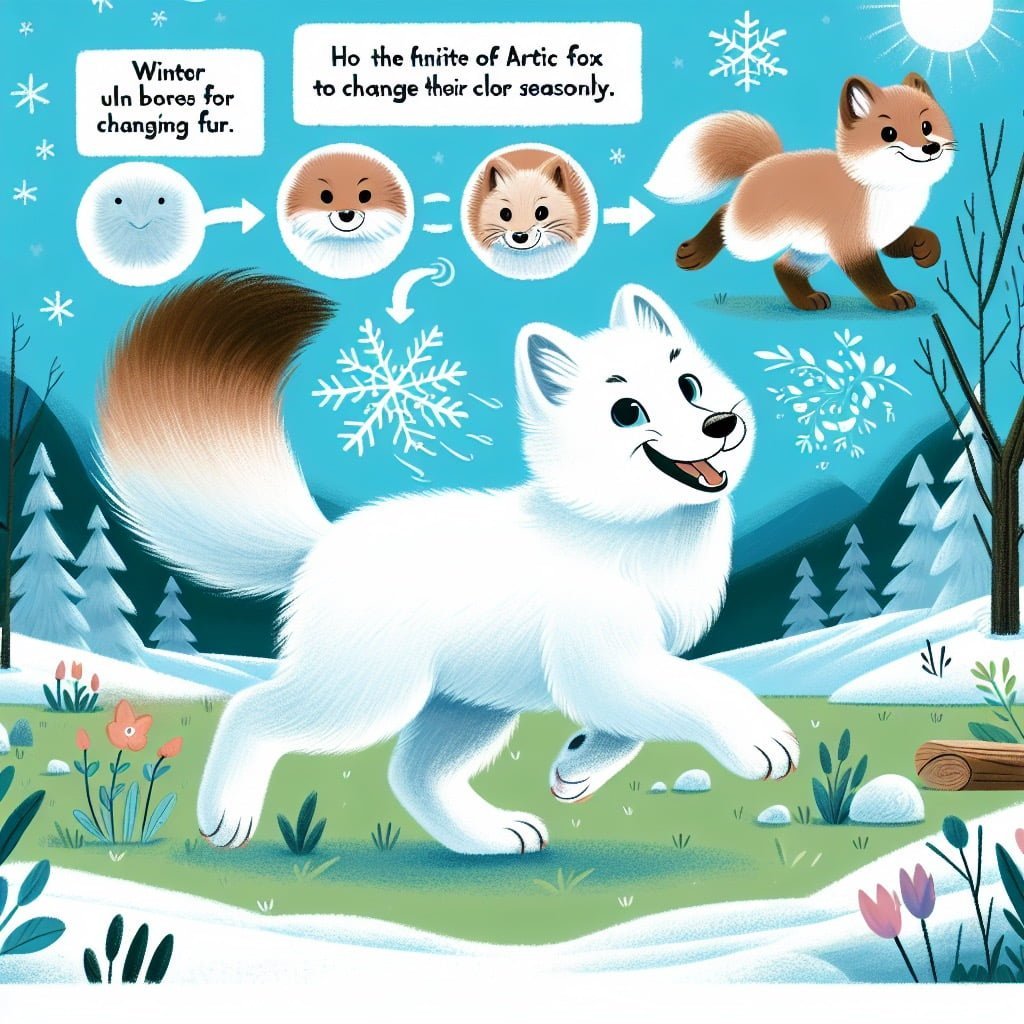
For younger kids: Arctic foxes change their fur color to match the seasons!
For older kids: During winter, Arctic foxes’ fur is white for camouflage, while in summer, it turns brown to blend with the tundra, helping them survive and hunt in changing environments.
Detailed explanation:Arctic foxes are truly fascinating creatures that have adapted to survive in some of the harshest environments on Earth. One of the most interesting Fox Facts For Kids about Arctic foxes is that they have the ability to change the color of their fur depending on the season. During the winter months, when the Arctic landscape is blanketed in snow and ice, the fox’s fur turns white to provide the creature with much-needed camouflage against predators such as polar bears and wolves. This transformation helps the fox blend seamlessly into its icy surroundings, allowing it to move about undetected as it hunts for food.
In the summer months, when the snow and ice have melted away, the Arctic fox’s fur undergoes another change. Its coat turns a brown or grey color, helping it to blend in with the rocky tundra and vegetation that dominates the Arctic landscape during this time of year. This adaptation not only provides the fox with camouflage but also helps regulate its body temperature, keeping it warm in the frigid winter months and cool in the warmer summer months.
The ability of Arctic foxes to change the color of their fur is a remarkable example of evolution at work. It is a key survival strategy that has allowed these resilient creatures to thrive in an environment where few others could survive. By blending in with their surroundings, Arctic foxes are able to avoid detection by predators and increase their chances of successfully hunting for food. This unique adaptation showcases the ingenuity and resourcefulness of these adaptable animals, making them truly remarkable creatures to study and admire.
Fox Facts For Kids
7. Foxes Have Whiskers on Their Legs

For younger kids: Foxes have whiskers on their legs to help them feel and sense their surroundings.
For older kids: Foxes not only have whiskers on their faces but also on their legs, which aid in detecting obstacles, changes in terrain, and hunting prey more effectively.
Detailed explanation:Foxes are fascinating creatures with many interesting features, one of which is the presence of whiskers on their legs. These whiskers, technically known as vibrissae, serve an important sensory function for foxes. Just like the whiskers on their faces, leg whiskers help these agile animals navigate their environment with precision.
Foxes are known for their exceptional hunting abilities, and the whiskers on their legs play a crucial role in this behavior. As foxes move through the grass or underbrush, their leg whiskers help them detect obstacles, navigate rough terrain, and even sense the movements of prey. By brushing against objects, the whiskers provide valuable information about the size, shape, and texture of the surrounding environment.
In addition to aiding in hunting, leg whiskers also play a role in communication among foxes. These whiskers can pick up subtle vibrations in the ground, allowing foxes to communicate with each other over long distances. This sensory ability helps foxes coordinate hunting efforts, avoid potential dangers, and maintain social bonds within their groups.
Overall, the presence of whiskers on their legs is just one of the many adaptations that make foxes such successful predators. These whiskers provide valuable sensory information that helps foxes thrive in diverse habitats, from dense forests to open grasslands. So, next time you see a fox, take a moment to admire not only its sleek coat and bushy tail but also the remarkable whiskers on its legs.
Fox Facts For Kids
8. Foxes Can Run Up to 30 Miles Per Hour

For younger kids: Foxes are super fast runners and can go really quick!
For older kids: With their agile bodies and strong legs, foxes can reach speeds of up to 30 miles per hour when chasing down prey or escaping danger.
Detailed explanation:Foxes are fascinating creatures that captivate the imagination of children and adults alike. One impressive fact about foxes that often intrigues kids is their remarkable speed. These agile animals are capable of running up to 30 miles per hour, making them one of the fastest land animals in the wild.
Foxes are known for their swift and graceful movements, which allow them to navigate through various terrains with ease. Their slender bodies, long legs, and strong muscles enable them to reach impressive speeds when they need to chase prey or escape predators. This incredible speed is crucial for their survival in the wild, where they must rely on their agility and quick reflexes to outsmart their opponents.
For kids who love learning about animals, discovering that foxes can run up to 30 miles per hour can spark their curiosity and lead to further exploration of these fascinating creatures. By understanding the physical abilities of foxes, children can develop a deeper appreciation for the natural world and the incredible adaptations that animals possess to thrive in their environments.
In conclusion, the fact that foxes can run up to 30 miles per hour is a remarkable demonstration of their athletic prowess. By sharing this fascinating tidbit with kids, we can inspire a sense of wonder and appreciation for the capabilities of these agile and swift creatures.
Fox Facts For Kids
9. Foxes Have an Incredible Sense of Smell
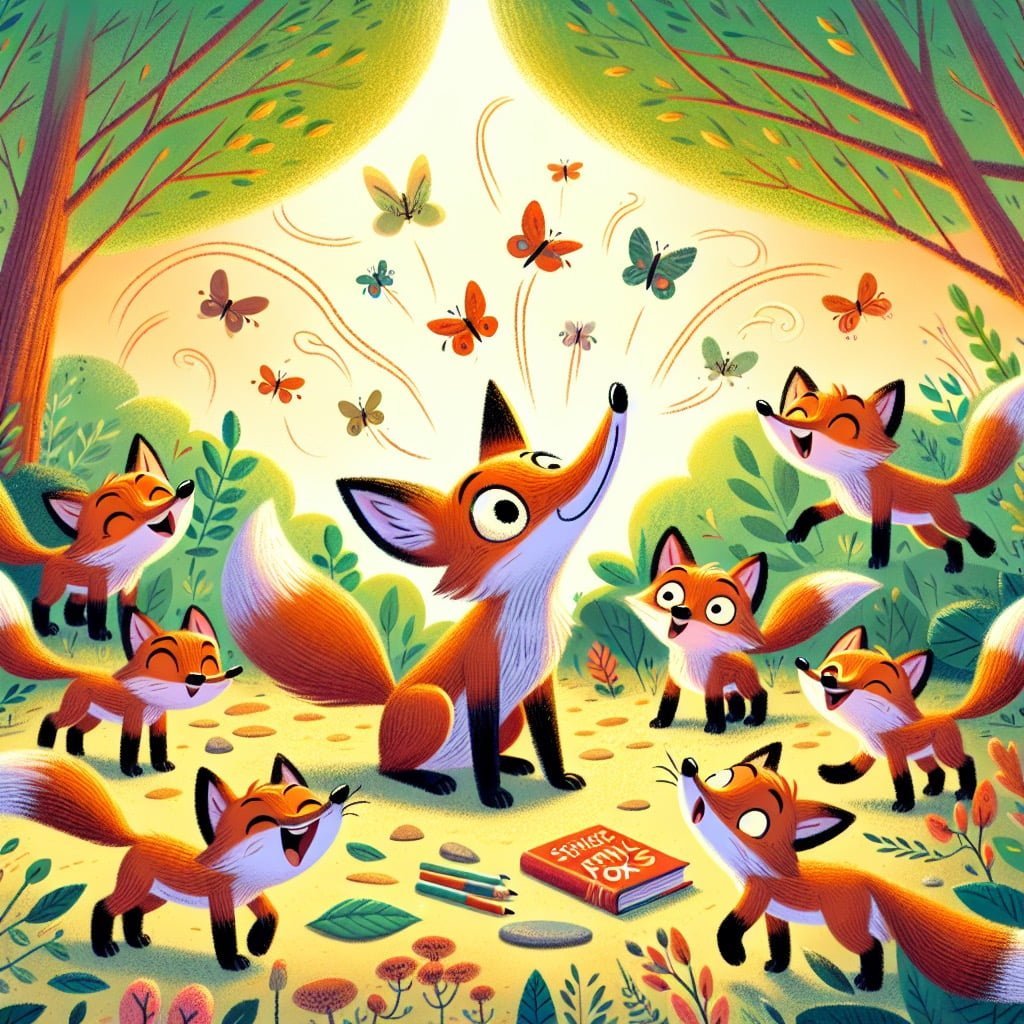
For younger kids: Foxes have noses that help them find yummy food to eat!
For older kids: Foxes possess a remarkable sense of smell, with the ability to detect scents from far distances, aiding in locating prey, navigating their territories, and communicating with other foxes.
Detailed explanation:Foxes are known for their incredible sense of smell, which is one of the key factors that help them survive in the wild. As omnivores, foxes rely on their sense of smell to hunt for food such as small rodents, insects, fruits, and even birds. Their keen sense of smell allows them to detect prey from far distances, making them skilled hunters.
One fascinating aspect of a fox’s sense of smell is their ability to differentiate between different scents. They can pick up on the scent of their prey, as well as potential predators, marking territories, and even other foxes. This is essential for communication and survival in the wild.
The olfactory sense of a fox is also crucial for locating food sources and identifying any potential dangers in their environment. They can detect hidden food underground or under snow, as well as discern whether a predator is nearby. This heightened sense of smell also helps them navigate and remember their territory, ensuring they can find their way back to their den or locate a specific hunting ground.
Overall, the incredible sense of smell possessed by foxes is a crucial adaptation that allows them to thrive in their natural habitat. It helps them find food, avoid predators, communicate with other foxes, and navigate their surroundings effectively. Foxes truly are remarkable creatures when it comes to their olfactory abilities.
Fox Facts For Kids
10. Foxes Play an Important Role in the Ecosystem
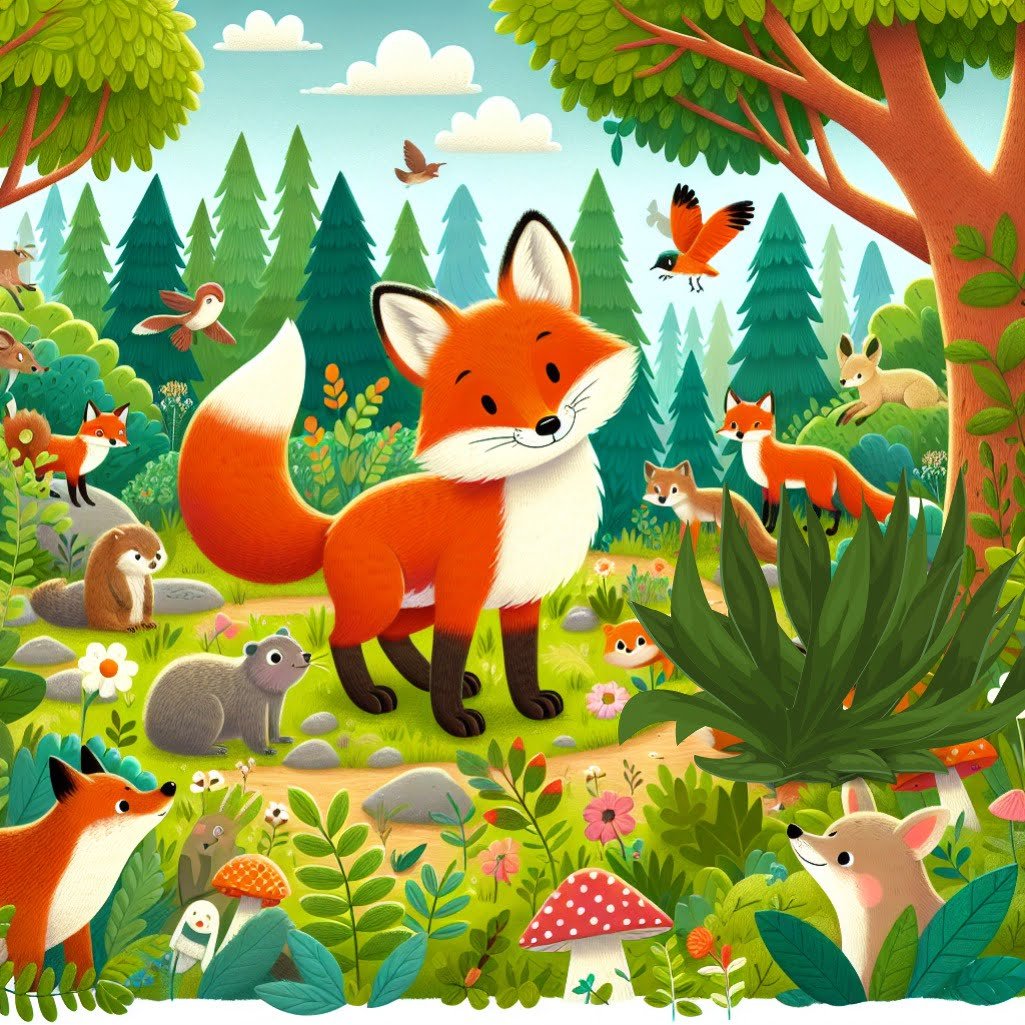
For younger kids: Foxes help keep the balance of nature by eating critters that can cause problems.
For older kids: Foxes play a crucial role in the ecosystem by controlling populations of pests like rodents and insects, helping maintain a healthy balance in the food chain and the environment’s overall well-being.
Detailed explanation:Fox Facts For Kids are always fascinating, and one of the most interesting facts about foxes is that they play a crucial role in the ecosystem. Foxes are considered keystone species, which means that they have a disproportionately large impact on their environment relative to their abundance.
One of the ways in which foxes contribute to the ecosystem is through their role as predators. Foxes primarily prey on small mammals such as mice, voles, and rabbits. By keeping the population of these small mammals in check, foxes help maintain the balance of the ecosystem. For example, if the fox population were to decline, the population of small mammals would likely increase rapidly, leading to overgrazing and depleting plant life. This would have a cascading effect on the entire ecosystem, impacting other species such as birds and insects.
Additionally, foxes help control the population of pests such as insects and rodents. By feeding on these pests, foxes help reduce the spread of diseases and crop damage, benefiting both humans and the environment. In this way, foxes provide a valuable service to the ecosystem by helping to maintain its overall health and stability.
In conclusion, Fox Facts For Kids should include the important role that foxes play in the ecosystem. By acting as predators and controlling pest populations, foxes help maintain the delicate balance of nature. It is essential to protect fox populations to ensure the continued health and stability of the ecosystem.
Did you know?
Did you know that foxes use their tail as a counterbalance when running, helping them make sharp turns with precision?
Summary of Fox Facts For Kids
If you’re looking for fascinating facts about foxes to share with kids, this blog post is full of interesting tidbits that are sure to captivate young minds. From their incredible night vision and diverse vocalizations to their unique group behaviors and impressive physical abilities, there’s so much to learn about these adaptable and intelligent animals. Kids will be amazed to discover how foxes can change their fur color, run at impressive speeds, and play a vital role in maintaining ecosystem balance. With engaging visuals and simple explanations suitable for different age groups, this blog post offers a fun and educational exploration of fox facts that will leave kids wanting to know more about these fascinating creatures.
Sources and additional information for Fox Facts For Kids
WikipediaBritannicaSan Diego Zoo KidsThe Smithsonian InstitutionDK Find Out!Australian MuseumWorld Wildlife FundThe Nature ConservancyAnimal PlanetMonterey Bay AquariumPBS NatureSmithsonian’s National Zoo & Conservation Biology InstituteWorld Wildlife FundAnimal Diversity Web (University of Michigan)IUCN Red List of Threatened SpeciesThe Cornell Lab of Ornithology – All About BirdsNational Audubon SocietyEncyclopedia of LifeSeaWorld Parks & EntertainmentAustralian Museum – AnimalsEncyclopedia of Life




